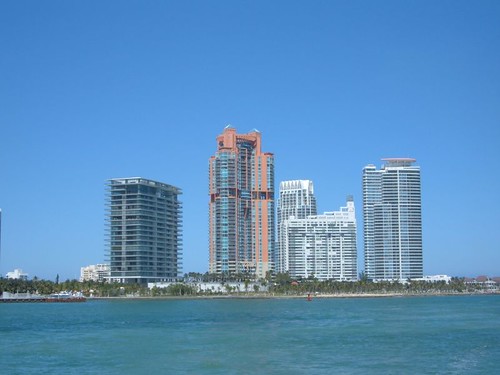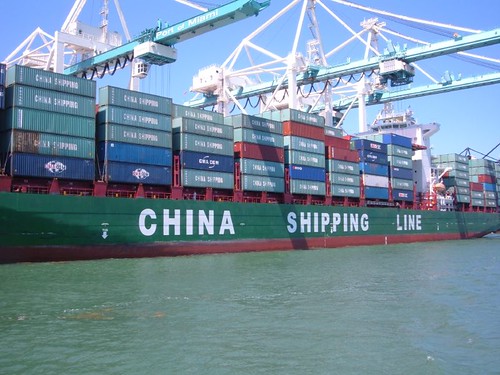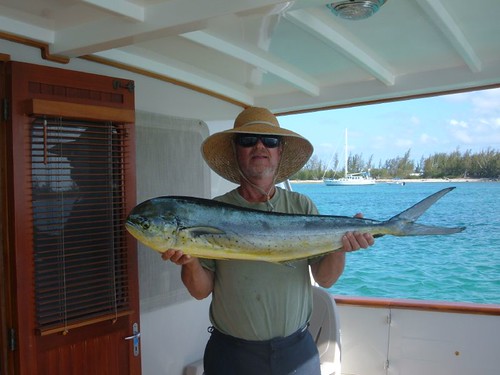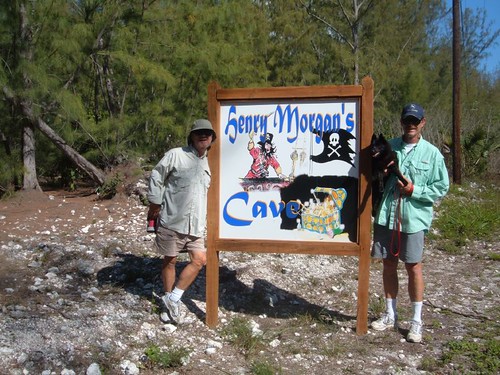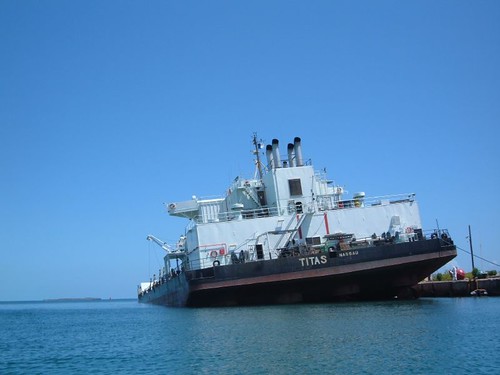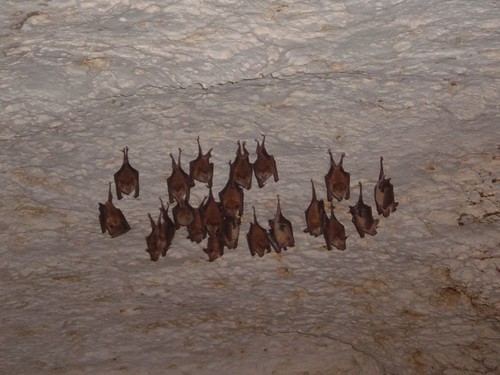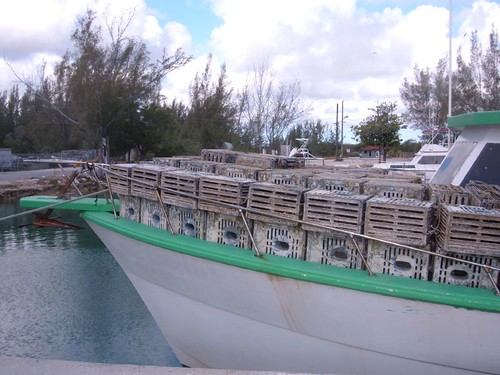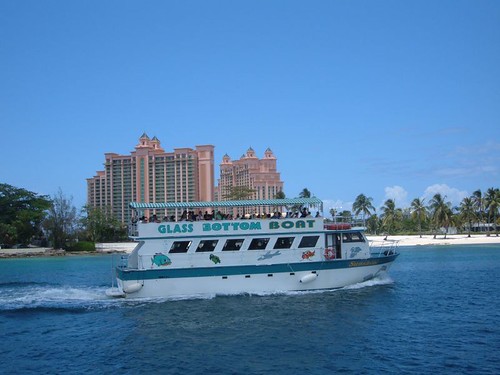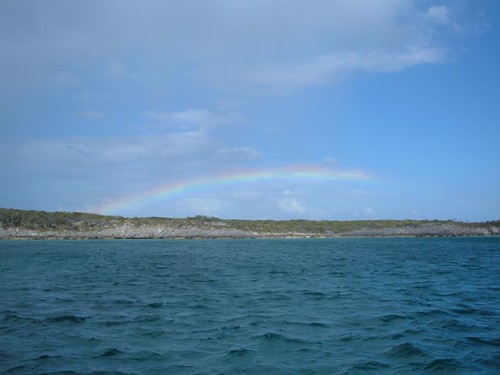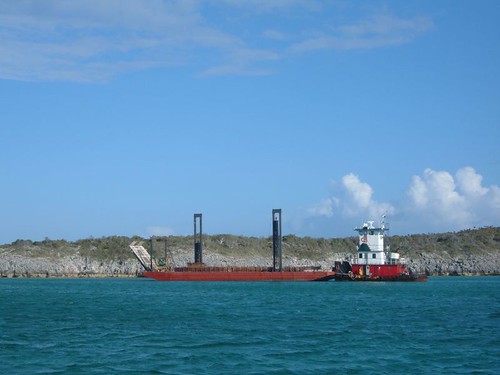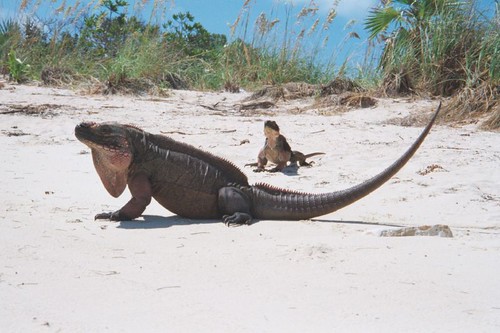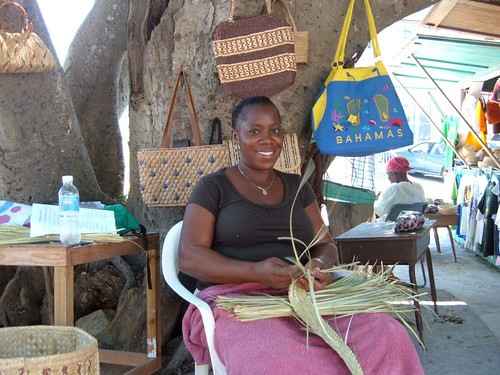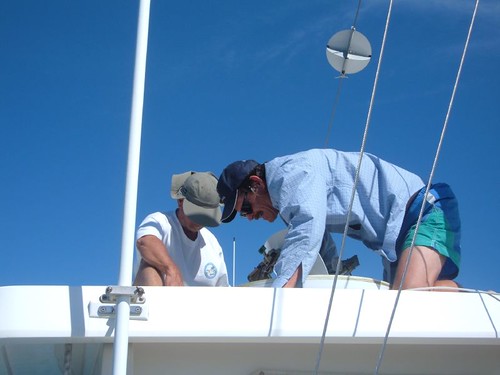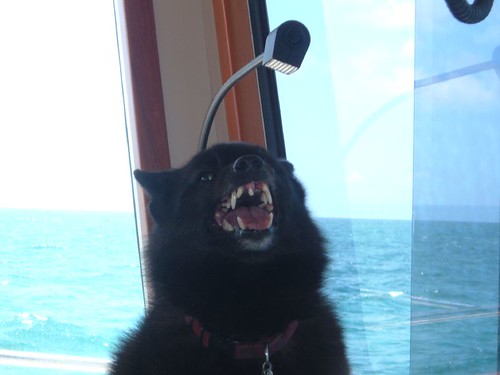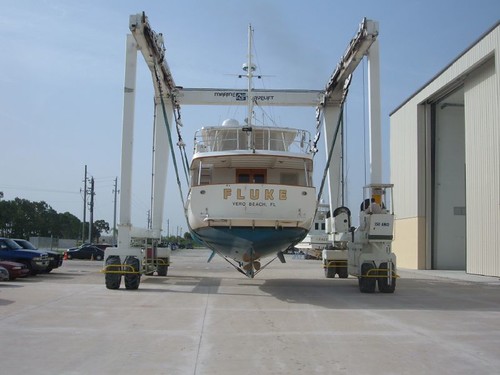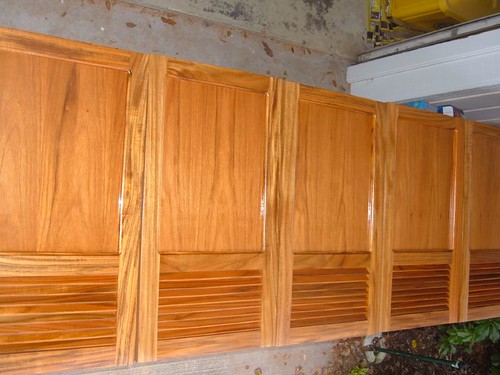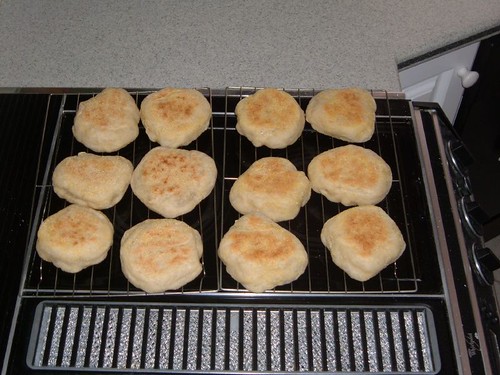CAT ISLAND
(New Bight, Fernandez Bay, Smith Bay)
June 6 – June 9, 2009
(New Bight, Fernandez Bay, Smith Bay)
June 6 – June 9, 2009
Cat Island is about 45 miles long and 4 miles wide. We approached from its southern point, coming in from Exuma Sound and headed about 10 miles eastward into New Bight. Spoiled from our lovely stay at pristine Conception Island, we experienced a state of a cultural shock back to the reality of civilization even before we had set the anchor down.
The closer we got to the settlement area, the greener the water got until we dropped the hook over a sandy bottom speckled with green algae (I already missed those Dr. Seuss trunkfish!) . Nutrient and waste run-off from the sparsely populated shoreline doesn't get much mixing with water from the Sound because of the prevailing easterly breezes. After Eddie got the anchor situated, thinking of the crystal clear water he had snorkeled in the day before, turned around and mouthed “YUCK” and said “I'm not going in here!”. I was staring at the garish house on shore, painted alternating stripes of lemon yellow, jade green, fuchsia, and purple, thinking of the pleasing rainbow blue colors of the waters we had left behind. The high pitched tweets of the graceful tropic birds were replaced with rooster crows and barking dogs. The gentle lapping of the waves on the white sandy beach were replaced with the din of tires on the paved road and a beeping horn. As night fell, the bright stars were replaced with a row of dull street lights and a giant Batelco tower with flashing red lights .
So, why did we even bother to stop here? We do like to check out the island settlements, and New Bight is the capitol of Cat Island, and the site of one of the most interesting man-made places in the Bahamas and the most noted tourist site on Cat Island, The Hermitage.
I don't want you to have the wrong idea when I say “populated” or “capitol”. The paved road is two lanes (no shoulders, and no lines), there are no traffic lights, and seldom are there two cars in a row or passing each other. The capitol building is composed of a post office, police station, and some sort of administrative office comprising less square feet than our home in Vero. It mostly looks like what you would think of as a small strip mall, not an official legal building. There are a few small homes scattered about, but no neighborhoods.
Getting High
There is a sign indicating the way to The Hermitage. The road starts out paved and takes you by the 1760 ruins of the Armbrister Plantation's Great House. We stepped over 2 termite mud trails running right over the pavement; the termites do this to get from one side to the other since it is easier than trying to burrow under the road. We frequently see the 2-3' high mud nests throughout the islands. If you poke a stick in through the side MANY termites come spilling out. They would make a good, easy meal for your pet ant eater!
You will pass by 1-2 acre size parcels of land where the vegetation has been cut down to shoulder height or stripped away altogether, all mostly by hand. During the winter months farmers grow crops such as corn, tomatoes, and watermelon. The ground is so rocky, clearing to bare earth is not practical or is it even necessary to remove all the native trunks or rocks; enough area is cleared just to give the crops light and gain a root hold. Since no fertilizers are used (it is too expensive), the little plots can only be used for 1-2 crops before the nutrients are depleted. Huge brown moths fluttered around us; it took me a while to figure out they weren't bats! Maybe they help pollinate the crops.
When the paved road ends a rocky foot path continues up the hill. There is a piece of scrap metal hanging on a tree. You are supposed to signal your continuing approach up the hill by picking up a stone and banging it on the metal. It really makes a loud sound! Then you can navigate up the steep, old steps chiseled into the rock, passing the Signs of the Cross which Father Jerome built into the rocky outcroppings. On the day we made the trek it was worth the climb, even with the overcast day and million mosquitoes that were with us.
The Hermitage is the jewel of New Bight and the result of the faith of one man, Father Jerome. Father Jerome was a Catholic priest who built several churches in the out islands, but chose to retire on Cat Island in 1939 and live out the rest of his life as a hermit on 206' high Mt. Alvernia, the highest point of land in the Bahamas where you can see the beautiful sapphire waters of the Atlantic to the east and the turquoise waters of Exuma Sound to the west.
Originally trained as an architect, Father Jerome built The Hermitage as a miniature replica of a European Franciscan monastery. He hand collected stones from the mountain top and fabricated a beautiful structure consisting of a chapel, visiting and sleeping quarters, outdoor kitchen with brick oven, water catchment slope terminating in a well, and bell tower (Eddie climbed up the thin tower to ring the bell!). There are arched doorways, columns, and domed roofs, all constructed solidly enough to have withstood the harsh elements all these years. A guest book lies within the chapel; it is interesting to read the comments people have left describing their feelings, all positive.
We departed the peak area by choosing to take what appears to be some kind of service road that loops more gently around the hill. We spotted a footpath branching off the road, headed toward the ocean side of the hill and debated whether or not to see where it lead. After I remarked “A path not taken is an opportunity missed” we all made the turn. The path was through dripping, dense native vegetation, some with fragrant flowers. After going through some up and down areas it finally leveled out and ended with a huge cave. It had a low entrance, but opened wide on the inside and had an opening in the ceiling towards the back which let in light. We wondered if Father Jerome may have stayed there while he was building The Hermitage.
FLUKE's Dirty Laundry
No, this isn't going to be that segment when I tell you the “bad” stuff and other breakdowns that have been happening, i.e. those things that embarrass my crew mates. This is the real low down on the new system we have come up with on how to get some laundry done.
We've had enough rain to be able to get our water tanks filled up and several (45 gals. worth) containers we keep on the upper deck. We usually use the container waters for anything that needs a freshwater rinse, and then we aren't tempted to use the valuable tank water for what some of us deem as an unnecessary use. I mean, it's a no brainer to decide if you want water for a shower or to flush the toilet vs. to use to rinse off your snorkel gear.
Laundry kind of goes in the snorkel gear category, but having it excessively build up causes me some “anxiety” (the guys use other descriptive terms). Our compromise solution is to run the washing machine when we have the tanks and all the extra containers full. We hand fill the washing machine 2/3 full with water from the containers for the wash cycle and then 2/3 full again for the rinse cycle. The remaining 1/3 for each cycle comes from the hot tank water. Each of us selects what we want to have washed until the load is full. We get to use the dryer for “free” when we run the generator to charge the batteries or else we hang the clothes outside, weather and time of day permitting. Leaving anything of value out on a line overnight can mean it may not be there in the morning if a high wind has kicked up and ripped it off the line. I've gone to sleep with my wetsuit hanging outside and awakened in the middle of the night, thinking about it, and gone outside to take it down for fear of losing it.
Cleaned Up With A Place To Go
Leaving New Bight we motored northward up the coast a few miles to Fernandez Bay. It is a small bay, maybe room enough for 6 boats (or only 3 if everyone anchored like we do!). It has a gorgeous beach and its adjoining property is home to Fernandez Bay Resort (FBR). We heard that we might be able to use their WiFi, so that is the reason for our stop.
FBR is an unique resort. Since it is really in the middle of nowhere it offers a variety of services on site that most island tourists would like to have: water toys of all kinds, charter fishing, gourmet food served in a tastefully decorated island theme dining area, internet and satellite TV, and on-site grocery store. The housing accommodations are villas, with or without kitchens, made out of native stone spread out amongst native vegetation, offering lots of privacy between units. There is an island style one-of-a-kind outdoor bar and patio: you get and make your own drinks and write it down on your own ticket, to be paid for at your convenience! There is no bartender, and the price of the drinks is listed. Even wayward cruisers can use this “service” or dine at the resort. The boutique, selling higher end clothing and jewelry, is also self serve, no salesperson present; you select what you want, bag it and turn in your ticket. Would this honor system work in any Hometown, USA? Despite all these goodies that we had to choose from, the one thing we really wanted, WiFi, was not available unless we were registered guests. However, the extremely pleasant and helpful staff suggested we go to a newly opened internet cafe just down the road in Smith Bay.
Back to School
Since all of us, including Ursa, could use a good walk, we decided to walk to Smith Bay, about 2 miles. Smith Bay is important to the area because it is the site of the packing house. Farmers can bring their produce to the packing house and have it packed up to be shipped to Nassau or other out islands. This is a big deal for the out islanders because it used to be that all the produce had to be shipped directly to Nassau and then redistributed again, paying a middle man. Wayne was looking forward to seeing the packing house. On the way there, a friendly Bahamian woman stopped her car and asked if we needed a ride or were we just out for a morning stroll? I am always pleased when the locals stop to assist us, and even more so when they offer us a ride even though we have the dog with us. We told her we had been on a boat and needed the exercise, but thanks for the offer.
There were more cars on the road than what I would have expected until we cleared the last hill and could see down into Smith Bay, where the EAST WIND, the weekly mailboat, was docked and was in the process of getting unloaded. We lucked out with timing our walk because watching the mailboat get unloaded is the BIG time event in the small out island communities, and we love hanging out and seeing all the activity. Most of the goods aren't even boxed up or else minimally wrapped so you can see all the stuff as it comes off the boat on pallets. Vendors were even present to sell food and drinks. Eddie bought some extra greasy, cooked right on the spot, yummy conch fritters. So much for all those calories expended during the walk over. We also took home some island potato bread, pineapple and coconut tarts, and an island cookie called a bennie. I can best describe a bennie as tasting like a free form cookie made out of bird seed with some chopped peanuts thrown in, held together with molasses and brown sugar. I think our parrot, Echo, would have liked it more than we did. While Eddie and I were sampling native cuisine, Wayne looked at the packing house, for about 37 seconds. It is really a metal building, about the size of a 3-car garage. Since winter growing season is over, no veggies were being packed.
As the skies were beginning to darken with an approaching thunderstorm, we tore ourselves away from the loading dock and went across the street to the building that housed the internet cafe which also turned out to be a store selling office supplies, various handy household items, and school textbooks. I enjoyed looking through the textbooks, seeing how the students are taught English, History, and Social Studies through a Bahamian perspective. The owner of the store, being very friendly and affable and not real busy by my observation, endured my barrage of questions ranging from how she ran the business, how the farmers farmed, to “important” current event items like who she had wanted to win Dancing With the Stars and American Idol. Satellite TV gives us all something in common!
That dark cloud grew even more menacing so we departed with the idea of going back later via the dinghy to the mailboat landing. We figured we were in for a real drenching when the first raindrops began to hit us, and there was no doubt more was on the way as we looked over to the next hilltop that was already gray with a downpour in the direction we had to go. Oh well, it was a hot day anyway, but how I hate the lightning. We had walked less than ¼ mile when a man driving a little bus asked us where we were going, and then told us to get in his vehicle, saying it looked like we were going to be in a fix if we didn't. So, as the rain began to come down harder, and I finally managed to figure out how to open the funny little side door, we all piled in the rickety little bus.
Our first question was “What is this?” The friendly man laughed and said it was the school bus. Oh, really? He wasn't wearing a uniform, there wasn't any writing on the outside, and most importantly, it wasn't even yellow (Isn't that some sort of a law?!). Since I could see around the driver's area and dashboard I noticed he didn't even have a microphone to be able to yell at the school kids with. I asked him, how come it didn't say anything about being a school bus on the outside? He said some people like to fix up their buses, but he hadn't done anything to his. Oh?, so that led to more questions to find out he owned and drove the bus as a private contractor for the island schools. It was Tuesday and the last day of school was Friday, so he would be done for this year with the school bus gig, but his wheels would be available for “charter”.
First class bus service to the five star resort, of course, meant that he drove off the main highway, along the lengthy entrance road, right up to the main building to drop us off in what had turned into a torrential downpour. So, we didn't disturb the ambiance for any of the guests as we tried to be inconspicuous in threading our way through the villas and get to the beach where we hoped FIN would be still securely waiting for us. I saw resort guests, standing under thatched beach cabanas staring at us as we trudged along in the pouring rain, providing some island entertainment for them, no doubt. We made it back safely to FLUKE, and FIN needed a good pumping out when the storm passed. Oh, we did some more laundry too (the silver lining to that black cloud).
We did take FIN back to the mailboat dock to go to the internet cafe later in the day. The EAST WIND was still in the process of being unloaded, all the refrigerated goods go off last because the cold freight container sits in the aft end of the ship, and all the pallet packed stuff sits forward. There was still a lot of hustle and bustle.
Our internet connection woes continued. Wayne had the laptop and could connect to the WiFi, but couldn't connect to the internet. He even tried plugging directly into her router, but he still couldn't get the internet connection. I read in one of the cruising guides that there are Cat Island natives who still practice black magic, but I really don't think that nice lady looked like the type (Aren't they supposed to look like that Obeah woman, Tia Dalma, who tried to help my favorite pirate, Jack Sparrow in Pirates of the Caribbean?). Wayne thinks it was because I was asking too many questions and she wanted to get rid of us! Well, whatever the reason, we couldn't go back the next day because we were destined to pull up anchor and head to the next port.
LITTLE SAN SALVADOR
June 10 – 11, 2009
June 10 – 11, 2009
Once upon a time there was a little, quiet, uninhabited island paradise that cruisers used as an anchorage between Cat Island and Eleuthera or as a jumping point to cross over to the Exuma chain of islands. Fishing, bird watching, and snorkeling were on everyone's agenda. Exploring the rocky cliffs and inland creeks that lay between white, sandy beaches filled in the time you didn't spend in the water. Little San Salvador was a Robinson Crusoe fan's delight or if you are like me, a place where you could fantasize about finding your favorite pirate's treasure. Or just do nothing but enjoy the solitude of being by yourself in the middle of nowhere.
In 1997, the idyllic paradise was turned topsy turvy when Holland America Cruise Line purchased the island and turned it into one of “their” out island day stops where their guests could experience a true, “native” experience (right out of a Hollywood studio). They even had the nerve to change its name to Half Moon Bay (I guess that name has more marketing appeal) . They dredged a big chunk out of the rocky cliffs, where the birds used to nest, so they had a place to store the tenders and work boats. Along the vacant beach, they erected colorful little shacks, all identical in structure, all exactly the same distance apart and the same distance from the shore, where you can buy “native” crafts (make sure the Made in China tags are removed if you are giving them as gifts), tropical drinks in plastic cups with pretty colors and little umbrellas, fast food, and other commodities for those guests requiring daily retail therapy. Hundreds of beach chairs line the shoreline where driftwood, flotsam, and jetsam used to pile up for beach combing delights. A netted swimming area will protect you from those dangerous denizens of the deep that are always lurking just out of sight waiting for toe appetizers. If you don't want to get your head wet you can float around on one of the big rubber dolphins or alligators (kind of out of place, but I guess kids like it). You can ride a horse in a single file line through the water and then go up into the outback, out of sight of the stables and beach. Have no fear, the path is fenced off on the inclines so your trusty island steed can't stray and take you asunder into the thorny bush or run you back to its stall at an unpleasantly high rate of speed. To further minimize interference of the guests' deserted island experience, the black smoke belching from the power plant is mostly obscured as it is set back from the waterfront, tucked in behind a small hill, although I'm sure it is visible from the upper deck of the cruise ship. Or, maybe the cruise director tells them that a pirate landing has been thwarted and the smoke is the burning pirate ship; hopefully not the Black Pearl though.
Despite this development and the island now being private, cruisers are still permitted to use the area for anchoring, providing they stay clear of interfering with the guests' out island experiences. Fortunately, cruise ships are only there for the day, and come 5:00 p.m. they are pulling up the anchor, hopefully with all the guests safely aboard, salt and sand free, waiting for their next happy meal.
FLUKE arrived about 3:00 p.m., dodging the parasailing boats, jet skis, launches, and giving the proper berth, i.e., passing behind as designated in the cruising guide, to the behemoth cruise ship Carnival PRIDE. We dropped the hook amidst a big oil slick, and then we had a couple of hours to watch the activities. As I looked through the binoculars that old tune Big Yellow Taxi by Joni Mitchell with the line “They paved paradise and put in a parking lot” kept popping into my head, and the fragrant blossoms of the island vegetation were replaced with the fresh smell of horse manure. We said good-bye to the PRIDE as we marveled in the anchor hauling operation. The horn was sounded and around the point of the island, out of sight, they went.
The next day we had the island to ourselves. We had already planned on spending an extra day to try to do some spearfishing on the extensive reef system that was close to shore and easily accessible for us. The coral heads that were closest to the island were covered with algae and dead and devoid of any life. Those that were farther out and in areas with more current were still in fairly good shape, but there weren't many fish of any kind, large or small. We ended up circumnavigating the whole island, but came back empty handed.
We decided to get a closer look at the cruise ship base; we were especially curious about where they kept the tenders for storage and offloading the guests since that was the area where they had done the most dredging. We dinghied up to the opening into the rocks, right passed the No Trespassing sign and motored by a couple of natives having a rendezvous beside a John Deere tractor. We gave them the “We know what we're doing wave with pleasant smiles” and motored onward. Just when we got in sight of the landing area, a man holding a radio stepped out and asked us if we had seen THE SIGN. Of course we did, did he think we could operate the dinghy if we were blind? We told him that we weren't planning on getting out of FIN and just wanted to see what the landing area looked like. He was very pleasant and said we couldn't proceed any further, but we were welcomed to go land on the beach and enjoy that area as long as a cruise ship wasn't present. The beach was too sterile for our tastes; we'd rather climb over rocks, debris, and stumps than beach chairs, so we headed back to FLUKE for a late lunch and to ready FLUKE for a very early morning departure to cross back over to the Exumas. Wayne finally figured out what the tiered platforms on the beach were for: to help the guests get on and off the horses!

